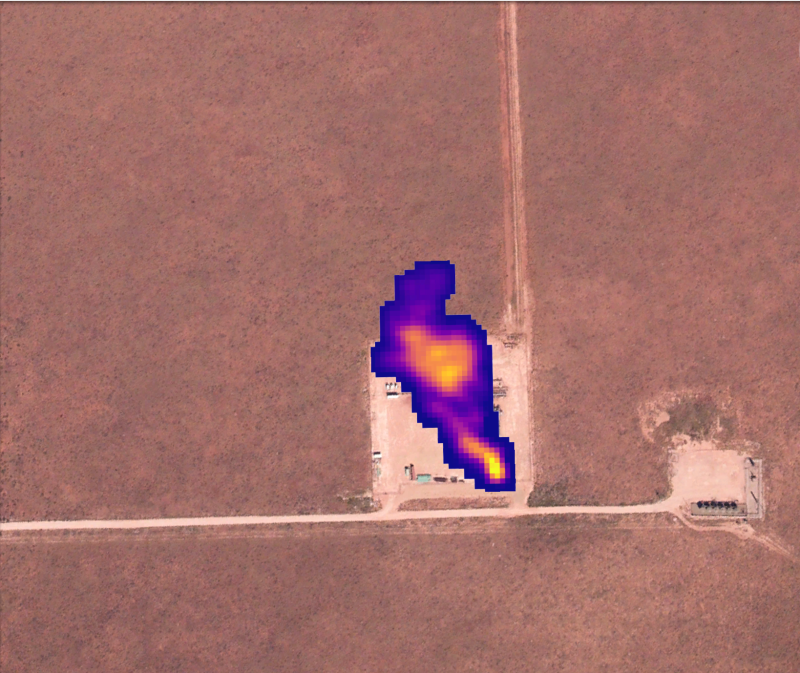Three years of airborne surveys conducted over the Permian Basin between 2019 and 2021 revealed about 30 facilities—including pipelines, well pads, compressor stations, and processing facilities—persistently emitted large volumes of methane over multiple years. The surveys were conducted by Carbon Mapper in partnership with the Environmental Defense Fund (EDF).
The partnership said repairing the discovered leaks could immediately reduce 100,000 metric tons of methane per year. These 30 facilities make up less than 0.001% of the region’s oil and gas infrastructure, and yet they produce the same near-term climate pollution as about half a million passenger vehicles. The mitigation of these 30 super-emitters would prevent $26 million a year in wasted gas.
“In this decisive decade for reducing greenhouse-gas emissions every molecule matters, and the fact that some facilities are persistently leaking methane for years without detection or repair highlights the urgent need for comprehensive and transparent methane monitoring,” said Riley Duren, chief executive for Carbon Mapper and research scientist at the University of Arizona. “The magnitude of emissions coming from a handful of methane sources in one of the top oil- and gas-producing regions illustrates the opportunity to make significant near-term progress toward the stated methane reduction goals of the US, other countries, and companies around the world.”
Cumulatively, the Carbon Mapper research team detected nearly 1,100 super emitters across the Permian Basin over the course of their research which was performed as part of a joint NASA, RMI, and University of Arizona research program and EDF’s PermianMAP initiative. These facilities ultimately contribute to about half of the basin’s total methane emissions. While leaks at these facilities are very large, most are shorter in duration and underscore the need for frequent monitoring of all facilities basin-wide to pinpoint and mitigate as many super-emitting sites as possible.
“It takes a combination of ground-based inspections and frequent advanced screening, such as aerial monitoring, to effectively find and fix these recurring sources of methane emissions,” said David Lyon, senior scientist at EDF. “We know methane can be emitted across a wide range of infrastructure and can be cost-effectively reduced with a combination of strong regulations and available technologies.”
The high-resolution data also reveal that gathering pipelines appear to be a significant source of leakage in the Permian, responsible for nearly 20% of the observed persistent super-emitters. However, EDF said of the 435,000 miles of US onshore gathering pipelines, only 11,569 miles (less than 3%) are currently subject to federal leak survey standards set by the Pipeline and Hazardous Materials Safety Administration (PHMSA).
The PIPES Act of 2020 expanded PHMSA’s responsibility to protect the environment and specifically called for enhanced oversight of gathering lines. PHMSA issued a new rule to expand leak survey requirements to an additional 20,336 miles of gathering lines, set to take effect in May 2022—but industry groups oppose that requirement and are seeking reconsideration of the rule.
Cutting methane emissions has become a heightened priority internationally. Recently, the US and more than 100 other countries signed the Global Methane Pledge to cut methane 30% by 2030.
Study data were collected by flights funded by NASA, the University of Arizona, RMI, and EDF using Arizona State University’s Global Airborne Observatory and the Jet Propulsion Laboratory’s Next Generation Airborne Visible Infrared Imaging Spectrometer. Data and imagery from Carbon Mapper’s airborne surveys in the Permian Basin are available online through PermianMAP and Carbon Mapper’s Data Portal. The two organizations are also working with partners to launch a new generation of satellites—MethaneSAT and the Carbon Mapper constellation—that will expand methane monitoring globally starting in 2023.


